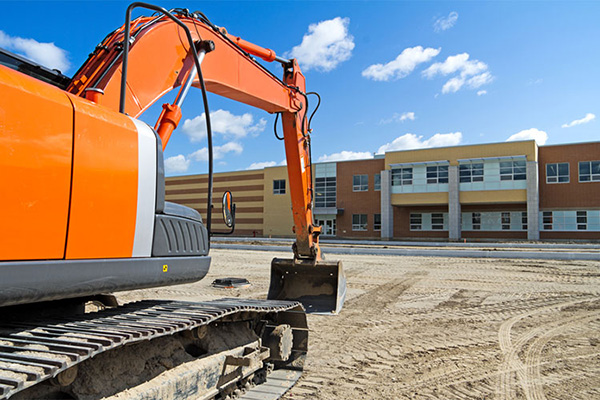“Thinking outside of the box” is one of the most clichéd phrases of all time, but it’s still a pretty good strategy when it comes to handling many difficult situations and it certainly is the strategy that the Guilford County Board of Education and the Guilford County Board of Commissioners are considering in light of hundreds of millions of dollars in capital projects that school system officials want to see in the coming years.
The Guilford County commissioners and school board members have a major facilities meeting coming up on Thursday, Jan. 31 and, heading into that meeting, the discussion is centered around innovative ways to save money on school projects going forward.
Most of those in the conversation agree that the first step in the process is putting underused schools to better use – but there’s also expected to be a need for some new construction in the coming years and one thing many seem to agree on is that Guilford County’s current method of building schools may have to be replaced.
One option, for instance, is a long-term lease-to-buy plan on specially built low energy consumption schools. In one model, a third party – perhaps a non-profit – builds the structure with energy-efficiency as a priority, gets grants and tax breaks associated with that method of construction, leases the building to the school system for five or ten years as part of a lease-to-own program, which also means the school enjoys radically reduced energy costs. In other parts of the country, versions of that model have been successful and have shaved millions off the usual cost of simply building and moving in.
Guilford County Board of Education Member Pat Tillman said that he and other school officials have been researching non-traditional school funding and construction methods that seem to be working well elsewhere.
“With the traditional way we fund schools, we are never going to catch up,” Tillman said.
He said programs in Greenville, SC have shown a great deal of promise for other communities facing the same problems. He said that at one time Greenville had an entire district full of trailers being used as classrooms, but a new and creative approach to school construction helped that system get kids in buildings relatively fast.
Tillman also said that smart construction methods that make energy and operational efficiency a priority from the very beginning of the process have led to buildings that have dramatically lowered costs over the life of the facility.
Guilford County School Board Member Byron Gladden said the current school board has a lot of new blood on it as well as a new chairman and it’s open to all good ideas to reduce costs.
“We’re willing to move in a fresh direction,” Gladden said, adding that the board would like to do so in partnership with the Board of Commissioners.
The county commissioners have already shown openness to exploring creative construction for school buildings. Several years ago, Commissioner Justin Conrad made a big push to seriously explore alternative models for funding the county’s school construction needs and he got irritated at staff when he felt as though they weren’t moving fast enough down that path. Now there’s a re-ignition of that effort as commissioners and school board members learn more about what’s working elsewhere.
Chairman of the Guilford County Board of Commissioners Alan Branson said he and other county officials are seriously exploring non-traditional methods for funding school construction. He said the county was getting more information on schools in Robeson County in North Carolina as well as in the Myrtle Beach area where some very creative plans had been implemented.
Branson said under one model counties put up collateral for the “state-of-the-art value-engineered” buildings rather than simply paying to build a traditional one.
According to Branson, the Jan. 31 meeting with the schools and an examination of the results of a yearlong school facilities study should provide both boards with a starting point.


While I gladly support the idea of finding other ways to finance these projects and there are several good ideas presented here, there is one term used in the article that set off alarm bells in my mind…”tax breaks”. Every time someone is given a “tax break”, it’s conveniently overlooked that the money will have to be made up somewhere else further down the road. Care to guess from where?